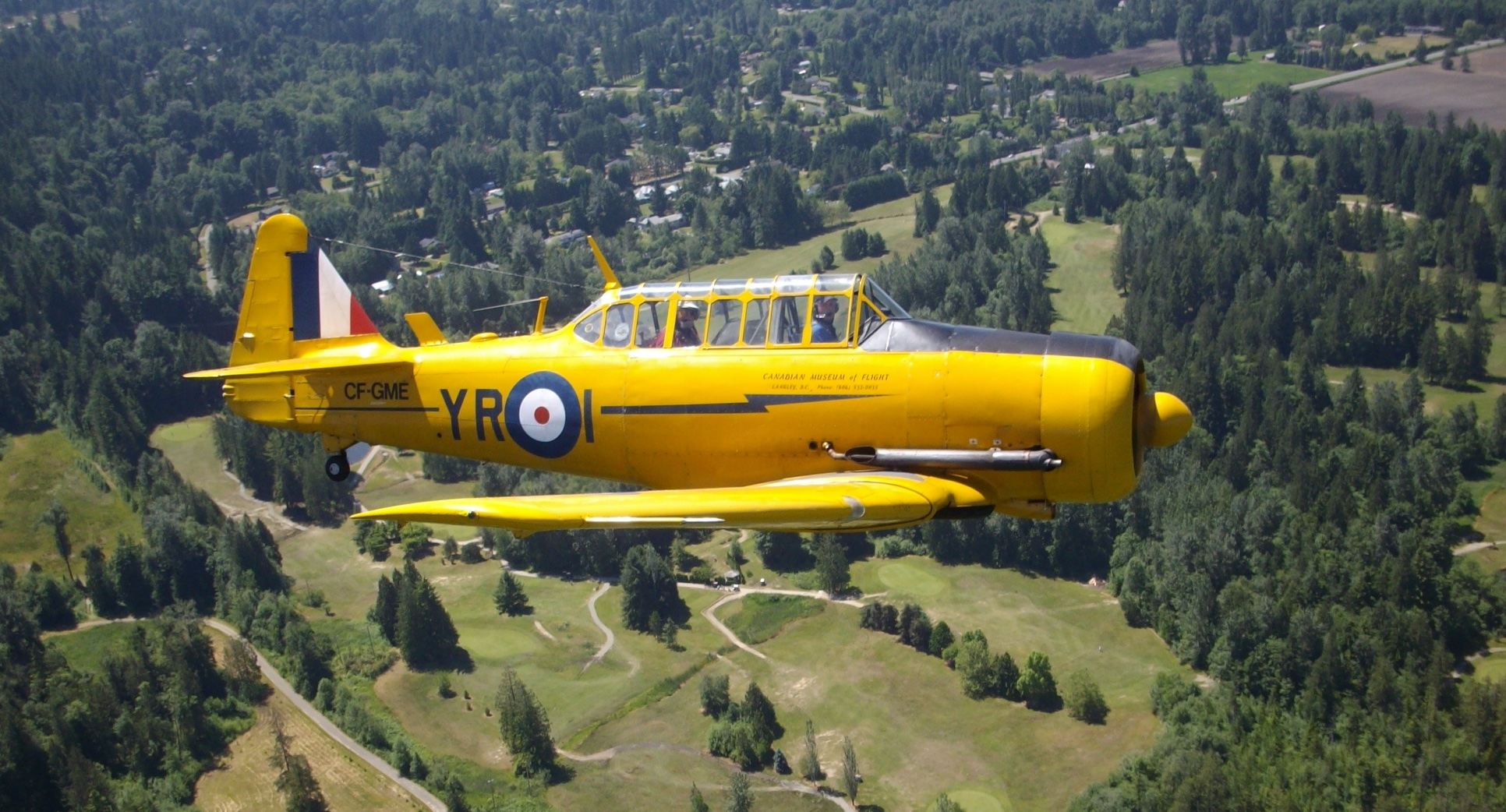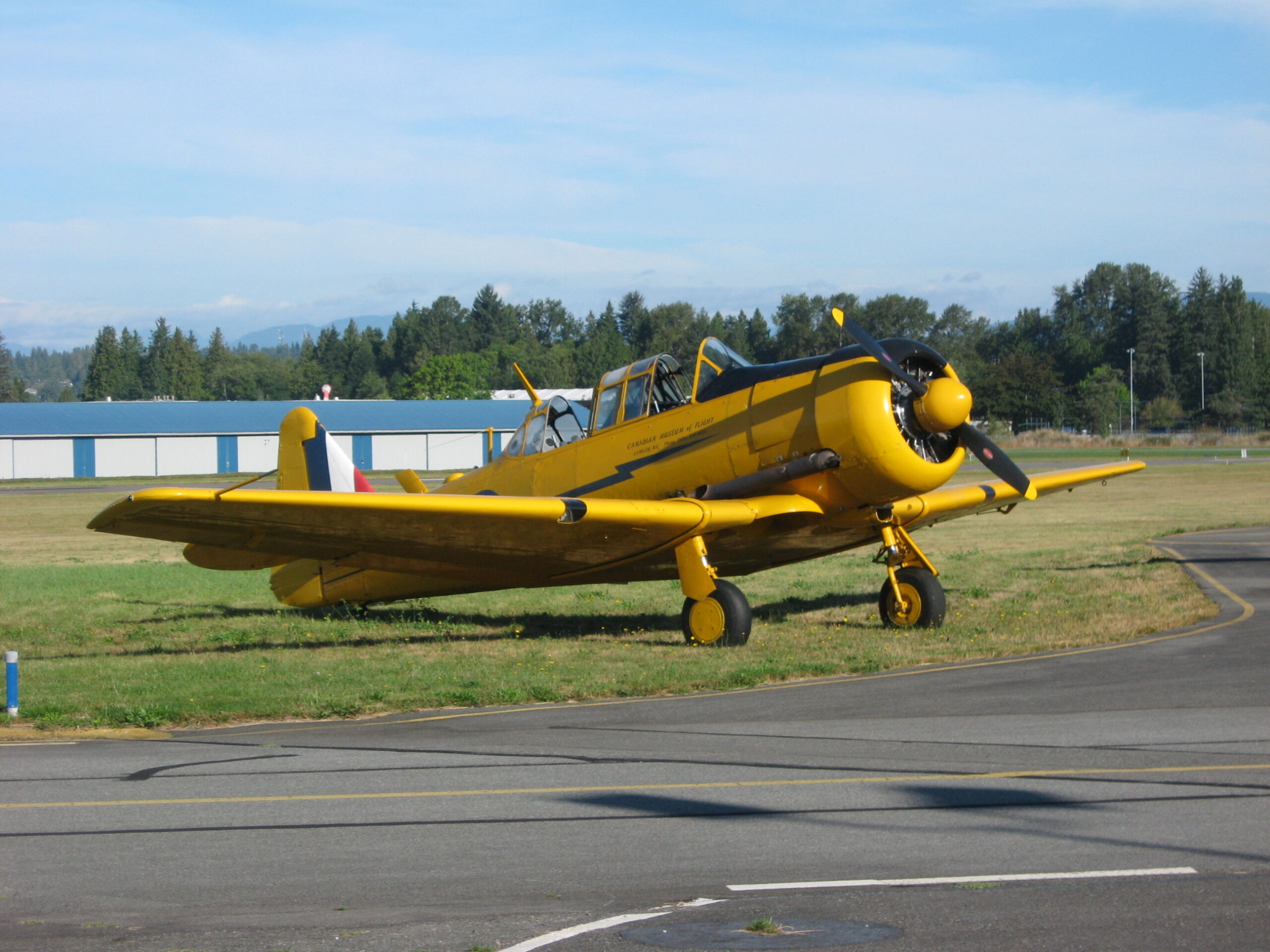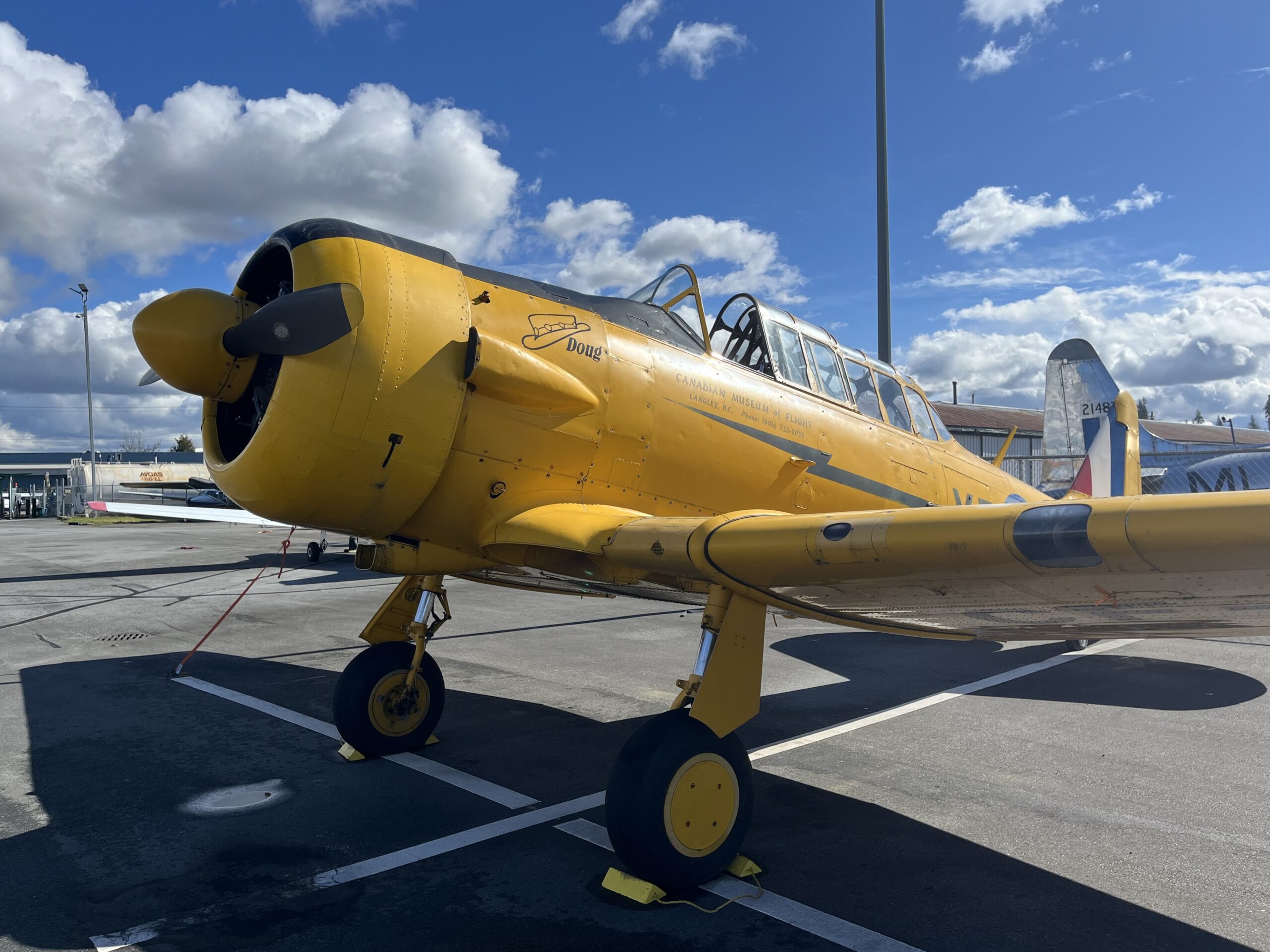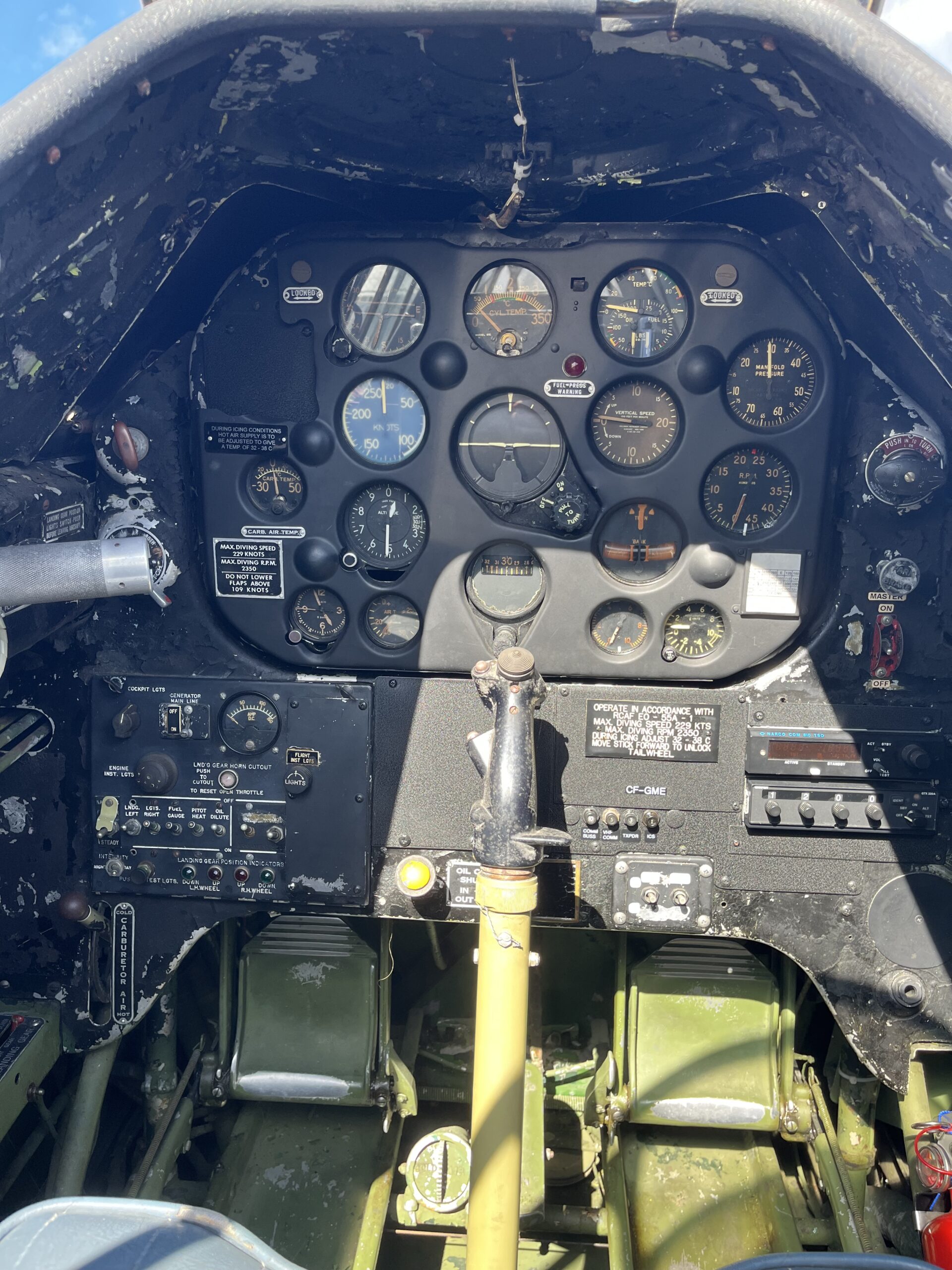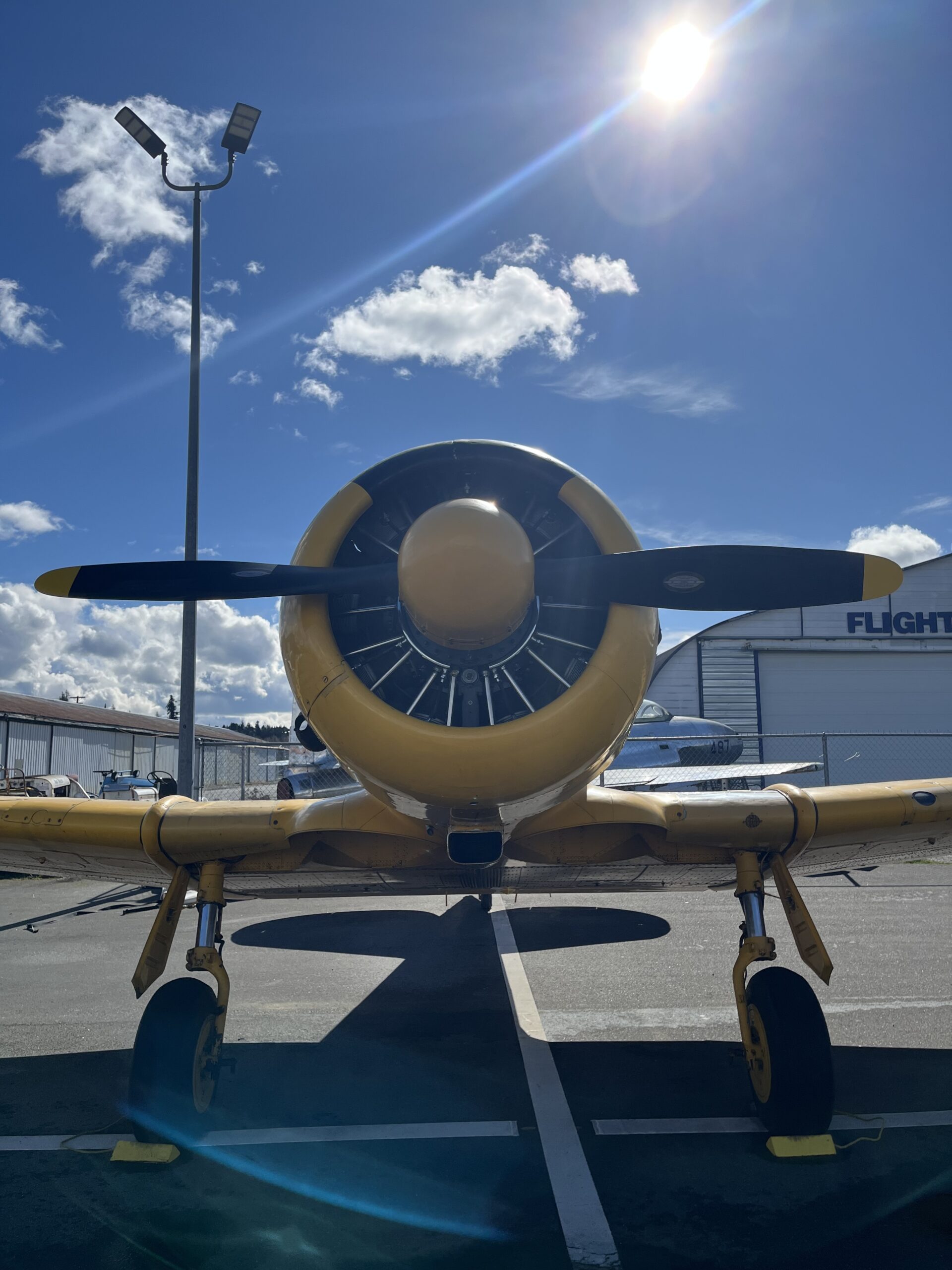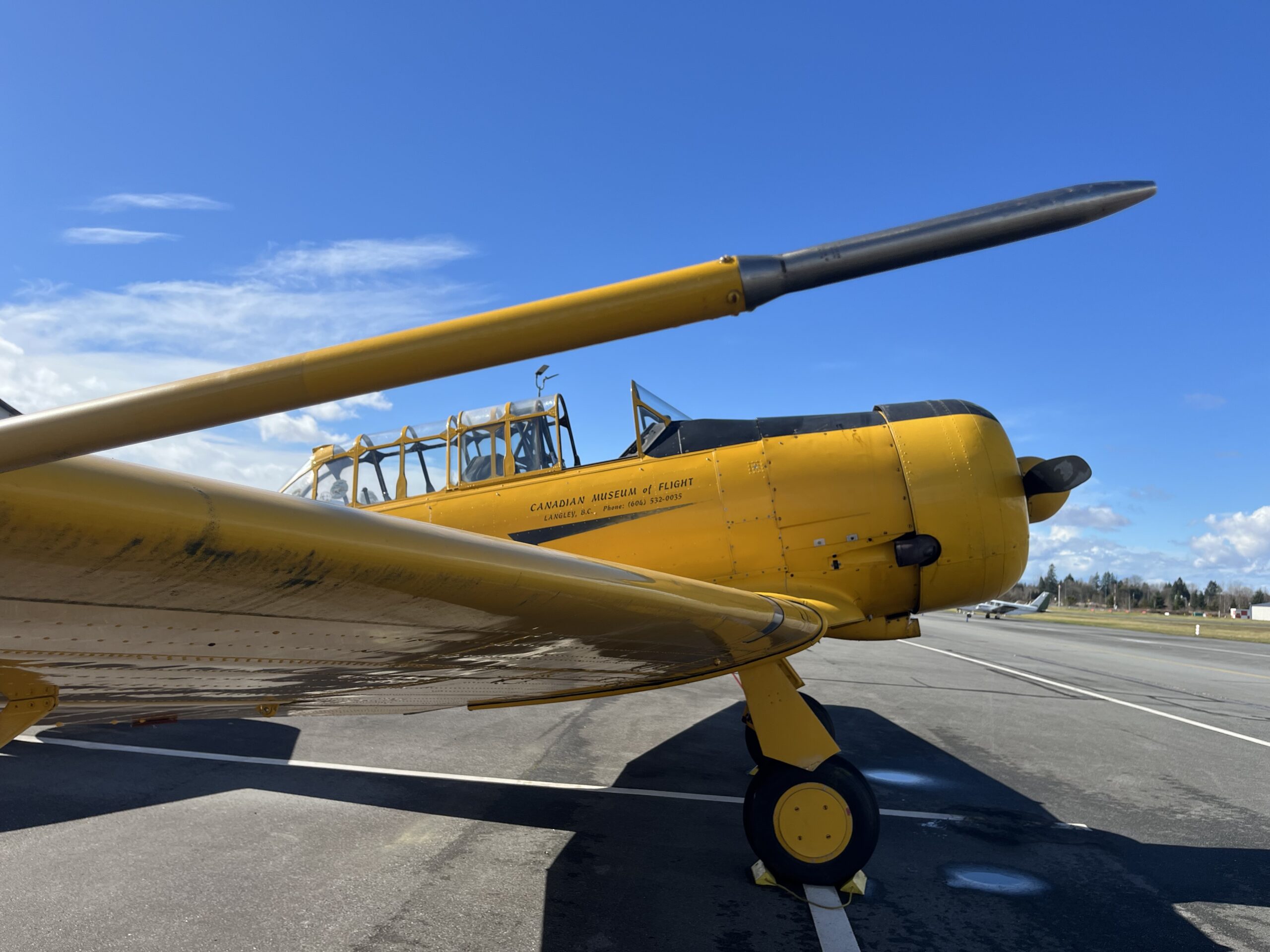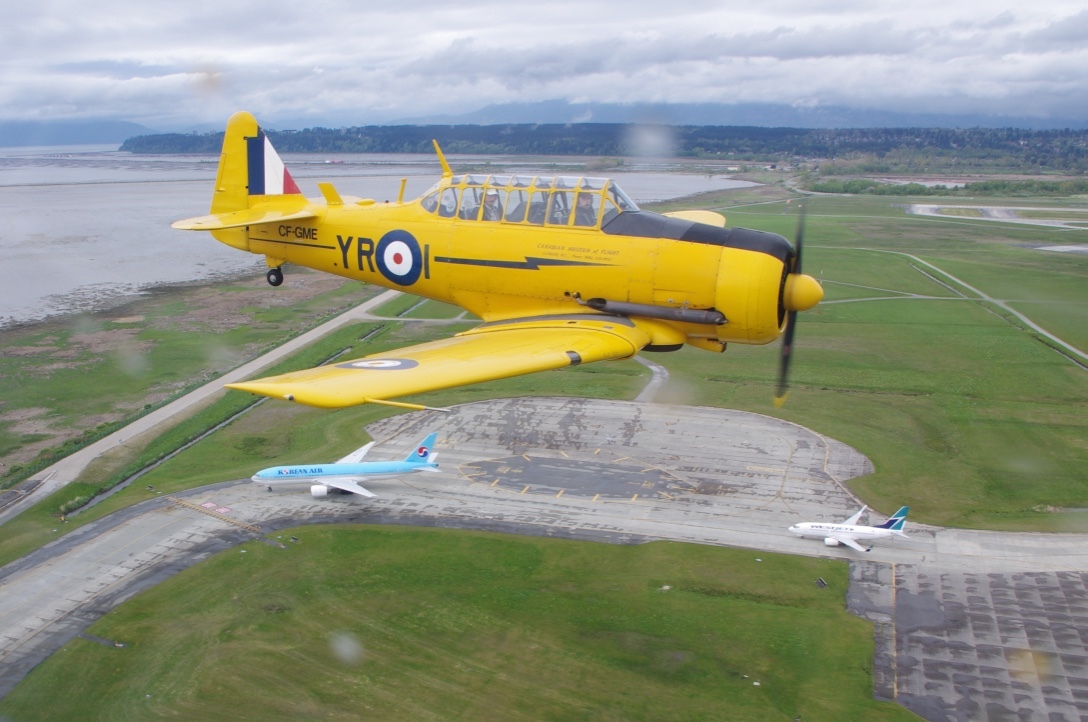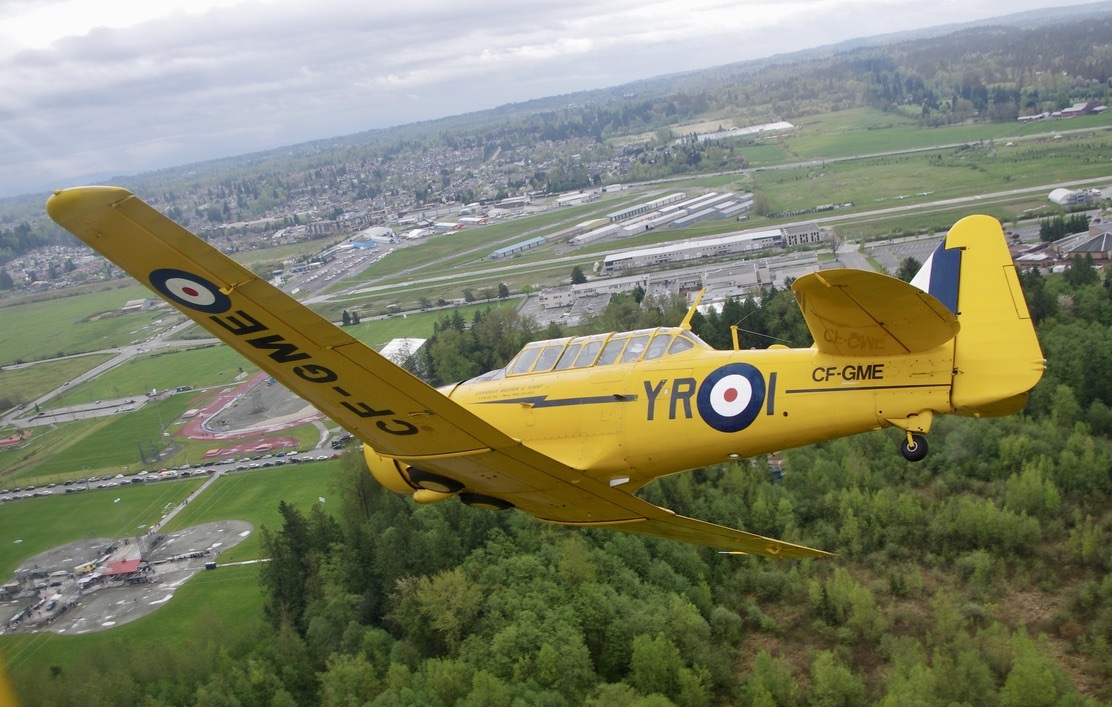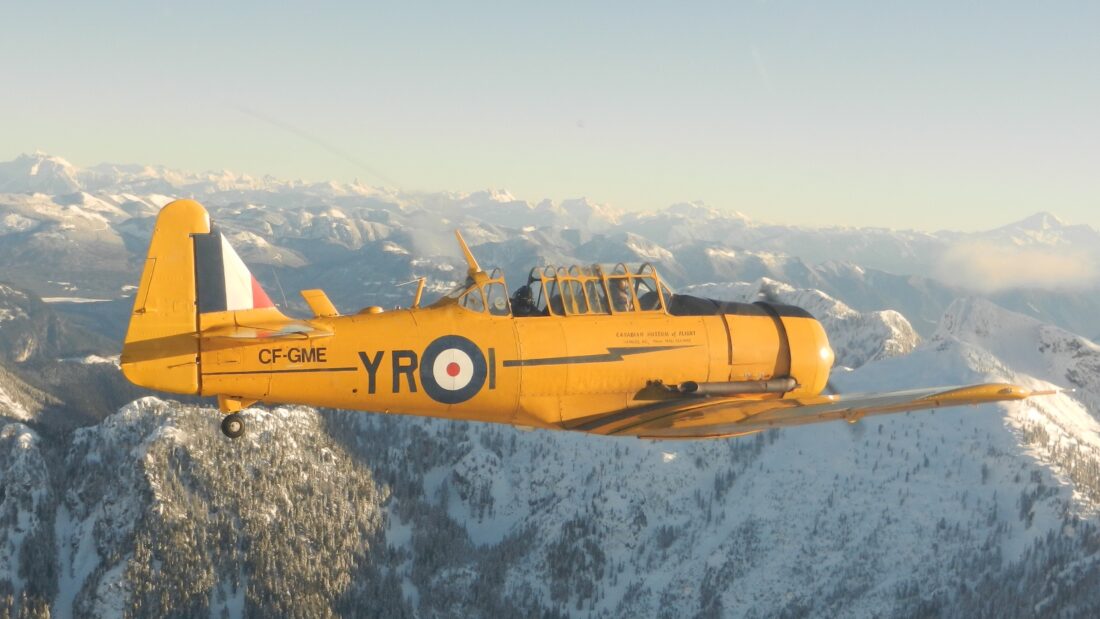
North American (Noorduyn) Harvard Mk IIB
General Description
Derived from the 1935 NA-16 prototype, the North American NA-26 design was first flown in 1938. This aircraft was designated the Basic Combat Trainer, BC-1. This design then went on to be called the AT-6 Texan and the SNJ in the USA, and the Harvard when in service with the British Commonwealth air forces, including Canada. In all, more than 20,000 airframes were built in California, Texas, Montreal (by Noorduyn), Fort William, Ontario (by Canadian Car and Foundry), and in Melbourne, Australia as the Wirraway (by Commonwealth Aircraft Corporation).
The first batch of Harvard Mk Is were delivered to the RCAF in the fall of 1939. The first Harvard Mk II used by the RCAF was delivered to Camp Borden in Ontario in the summer of 1940. It was an anglicized version of the AT-6A, the differences being a lengthened exhaust stack, a fixed rear canopy section, an altered instrument panel and a British style control column. The Mk II was also fitted with the capability to hold a .303 calibre air operated machine gun on the starboard wing and a cine-camera in the port wing, with a gun-sight for the front cockpit. The plane was also equipped with hardpoints under the wings to carry 8 practice bombs. The N.A. Harvard Mk.II was one of the most important single engine training aircraft of the British Commonwealth Air Training Plan. It was known as “the pilot maker” because of its important role in preparing pilots for combat.

After World War 2 the Mk.II Harvard was relegated to armament training and reserve squadron use, as the more modern Mk.IV came along. At the end of WW2, Harvard Mk.II’s were also used for naval pilot training in Nova Scotia. In January of 1947 Harvard Mk.II’s began arriving in Dartmouth Nova Scotia for their stint as training aircraft for the newly formed Canadian Naval Air Arm. Much of the training was on gunnery exercises to prepare pilots for the deflection shots necessary with the gyro gun-sight of the Supermarine Seafire. Harvard Mk.II’s were the planes chosen again for the training task. The course was similar to the one used to train RCAF pilots, with the exception of gunnery and formation training which was done on Seafires. The Harvard remained in RCAF use up until 1965, while the USAAF and US Navy retired their T-6’s and SNJ’s by the mid-1950’s.
Upon their retirement from military use, many Harvards and T-6 Texans found a second life in the civilian world. They became a very popular personal airplane, but they were also used airshow performers, air racers, sky writers, simulated aerial combat, and for vintage aircraft flight experiences.
Today there are approximately 1200 Harvard/T-6/SNJ’s surviving world-wide. Of these, around 500 of them remain in flying condition. Some are even still being used for air racing, and flown by airshow aerobatic performers. Not bad for an airplane design that is surpassing 80 years of age!
Our North American Harvard Mk II
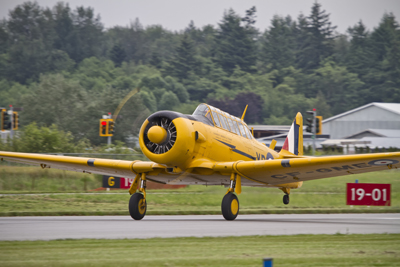
One of the museum’s most impressive artifacts is our North American Harvard. It is one of the Canadian-built Mk IIB models, built by Noorduyn Aviation in Montreal, QC for the RCAF and was brought on strength in 1942 and assigned the registration RCAF 3275. RCAF 3275 served with the Central Flying School at CFS Trenton, Ontario until the end of the war in 1945.
Post war, our Harvard went on to serve with No. 400 Squadron (Auxiliary) at RCAF Station Downsview, Ontario and in November of 1952 it was transferred for use by the Royal Canadian Navy, and was based in Dartmouth, NS. In April 1960 the Harvard was struck off strength.
It was registered as CF-MGI and flown around southern Ontario by three different owners throughout most of the 1960’s and 1970’s. In 1975 it was purchased by Rolf A. Yri of Surrey, British Columbia and brought out to the west coast. The Y R I on the fuselage are not accurate RCAF markings, but in fact the owner’s last name sneakily hidden in plain sight. In 1986 it was exported to the U.S. for a short period of time before being brought back to Canada in 1989 by its next owner, Brian D. Beard. Dr. Potter purchased the Harvard from Brian Beard and eventually donated it to the Museum in 1996. This aircraft now registered as C-FGME and is flown on a regular basis and can be seen at our museum and at most of the local airshows around the Fraser Valley.
The Canadian Museum of Flight is dedicated to preserving Canada’s aviation heritage, from rare artifacts to the very aircraft that shaped our history. Your support allows us to restore, maintain, and share these treasures with the public, inspiring future generations to reach for the skies. Every gift makes a lasting impact — join us in keeping aviation history alive: Donate Now!

Technical Details:
- Serial: 07-144, RCAF 3275, CF-MGI, N9750M, CF-GME
- Manufactured: 1941
- Engine: 600 hp Pratt & Whitney Wasp R-1340-AN-1 air cooled radial (click for details)
- Maximum speed: 212 mph (341 km/h)
- Service ceiling: 21,500 ft (6553 m)
- Empty weight: 4,158 lb (1,886 kg)
- Loaded weight: 5,617 lb (2,548 kg)
- Span: 42 ft (12.8 m)
- Length: 29 ft (8.8 m)
- Height: 11 ft 8 in (3.5 m)
- Wing area: 253.7 sq ft (23.6 sq m)
(Photo credits: C. Hutchins)


